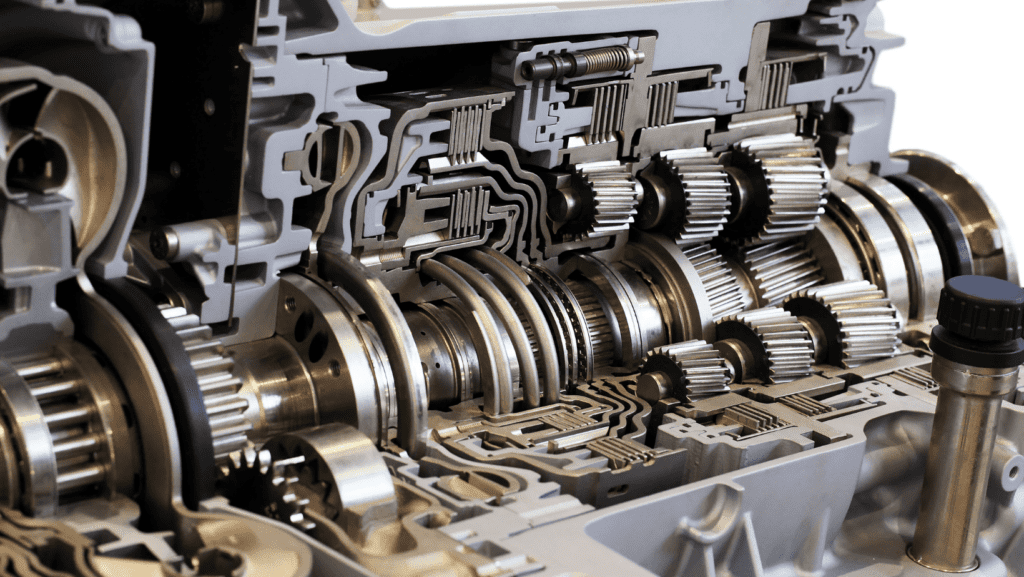Volvo vehicles are known for their durability, safety, and performance. However, no vehicle is immune to wear and tear over time, especially when it comes to one of the most complex components: the transmission. Your transmission is responsible for transferring power from the engine to the wheels, making it an essential part of your car’s performance and drivability.
The sooner you recognize and address transmission issues, the more likely you are to avoid serious damage and expensive repairs. Below are 9 clear signs your Volvo may need transmission repair, along with advice on what you should do next.

1. You Notice a Transmission Fluid Leak
One of the easiest transmission problems to spot is a fluid leak. Transmission fluid is usually red or pink and slightly sweet-smelling. If you see a puddle under your car, particularly toward the middle, you could be leaking fluid.
Why this matters: Transmission fluid keeps internal components cool and lubricated. Without it, your transmission can overheat and wear out quickly. Even a small leak can lead to big problems if ignored.
What to do: Have your vehicle inspected as soon as possible. A mechanic can confirm the source of the leak and repair it before it causes lasting damage.
2. There’s a Burning Smell While Driving
A burning smell coming from your car should never be taken lightly. If the odor isn’t coming from overheated brakes or oil leaks, it could be related to your transmission.
Why this matters: When transmission fluid overheats or breaks down, it loses its ability to lubricate and protect moving parts. This can lead to friction, damage, and, eventually, complete transmission failure.
What to do: Stop driving and have your vehicle looked at right away. Continued driving under these conditions can cause serious and costly damage.
3. Shifting Gears Feels Rough or Delayed
Your Volvo should shift gears smoothly and quietly. If you notice hesitation, a hard “clunk” during shifts, or delayed engagement when you switch from park to drive, something is off.
Why this matters: Rough shifting can be caused by low transmission fluid, a faulty solenoid, or worn internal parts. These issues will not resolve on their own and tend to worsen over time.
What to do: Check the fluid level and condition. If it is dark or smells burnt, it may need to be flushed or replaced. Visit a professional to rule out mechanical problems.
4. You Hear Grinding or Feel Shaking When Driving
Any grinding noises or shaking sensations while shifting gears or accelerating should raise concern. These symptoms are often associated with manual transmissions, but automatics can be affected as well.
Why this matters: Grinding and shaking are usually signs of clutch issues, worn synchronizers, or contaminated fluid. Left unaddressed, these problems can lead to severe transmission damage.
What to do: Inspect your transmission fluid first. If it is dark or gritty, that is a clear sign it needs attention. If the fluid looks fine, a mechanic will need to examine the clutch or internal components.
5. The Clutch Pedal Feels Off in a Manual Transmission
Drivers with manual Volvos may notice that the clutch pedal engages too close to the floor or too high up. Both situations point to different problems, but each can impact how your vehicle performs.
Why this matters: A low clutch pedal could mean a problem with the hydraulic system, such as a leak or the need for bleeding. A high clutch pedal often means your clutch disc or pressure plate is worn out.
What to do: Have the hydraulic system checked for leaks and consider replacing worn clutch components. These are generally straightforward repairs if handled early.

6. Strange Noises Are Coming from the Transmission
Unusual sounds like whining, clunking, or buzzing are strong indicators of transmission trouble.
- A whining noise might be a sign of low or degraded fluid.
- Clunking typically means gears are not engaging properly.
- Buzzing or humming could point to failing bearings or a bad transmission pump.
Why this matters: Transmission sounds are often your first warning. Ignoring them can lead to more extensive and costly repairs.
What to do: Describe the noises in detail to your mechanic. They can perform a thorough diagnostic check to determine the source and recommend repairs.
7. Your Car Changes Gears Randomly
If your Volvo shifts gears unexpectedly or falls out of gear, you are dealing with a potentially serious issue.
Why this matters: Erratic shifting can be caused by dirty transmission fluid, a malfunctioning control module, or worn mechanical parts. Random shifting makes your vehicle unpredictable and unsafe to drive.
What to do: Bring your car in for diagnostics right away. You may need to replace the transmission control module, flush the fluid, or repair worn components.
8. The Vehicle Feels Sluggish or Has No Power
If your engine is running fine but the car struggles to accelerate or does not respond when you press the gas, the transmission may be the culprit.
Why this matters: A failing transmission may not be delivering power to the wheels. It could also mean your car has entered “limp mode,” a safety feature that limits performance to prevent further damage.
What to do: Avoid driving until the issue is diagnosed. Your vehicle’s onboard computer should have stored error codes that can help a mechanic pinpoint the issue quickly.
9. The Check Engine Light Is On
The check engine light can indicate a wide range of problems, and many of them relate to the transmission.
Why this matters: Transmission sensors monitor performance and fluid levels. When something is wrong, these sensors trigger the warning light. Ignoring it can allow a small issue to grow into a major failure.
What to do: Get the vehicle scanned for diagnostic trouble codes. This is a quick and inexpensive step that can reveal hidden transmission issues before they become serious.

Why Early Action Matters
Waiting to fix a transmission problem usually leads to more expensive repairs. What starts as a simple fluid change can turn into a full rebuild if you delay service for too long. Being proactive not only saves money, but it also keeps your Volvo running smoothly and safely.
Delaying repairs can also impact other systems in your vehicle. A struggling transmission can strain your engine, drivetrain, and cooling system, causing a domino effect of mechanical issues. This added stress can lead to reduced fuel efficiency, rough handling, and even safety hazards on the road. Addressing the problem at the first sign of trouble helps you avoid a chain reaction of damage and ensures your vehicle continues to perform at the level Volvo is known for.
If your Volvo is showing any of the signs listed above, it is time to have it looked at by a transmission specialist. Attempting to ignore these warning signals can put you at risk of major vehicle failure and even put your safety in jeopardy.
Contact Rick & Ray’s Auto Plaza
At Rick & Ray’s Auto Plaza, we specialize in Volvo transmission repair and diagnostics. Whether it is a fluid issue, a control module malfunction, or a complete rebuild, we will give you honest advice and professional service you can count on. Call us today to schedule an inspection!
Let us help you keep your Volvo on the road for years to come.



